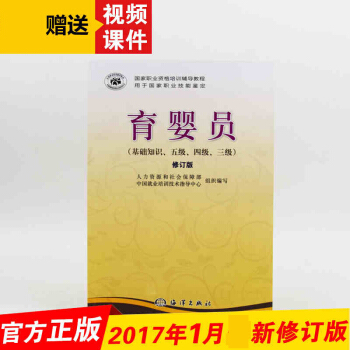

具体描述
内容简介
该书具有很完整的材料与工程体系,无论作为材料专业的教材,还是科技书,都具有很强的实用价值。目录
1. Introduction1.1 Historical Perspective
1.2 Materials Science and Engineering
1.3 Why Study Materials Science and Engineering?
1.4 Classification of Materials
1.5 Advanced Materials
1.6 Modern Materials’Needs
2.Atomic Structure and Interatomic Bonding
2.1 Introduction
2.2 Fundamental Concepts
2.3 Electrons in Atoms
2.4 The Periodic Table
2.5 Bonding Forces and Energies
2.6 Primary Interatomic Bonds
2.7 Secondary Bonding or Van der Waals Bonding
2.8 Molecules
3. Structures of Metals and Ceramics
3.1 Introduction
3.2 Fundamental
3.3 Unit Cells
3.4 Metallic Crystal Structures
3.5 Density Computations-Metals
3.6 Ceramic Crystal Structures
3.7 Density Computations-Ceramics
3.8 Silicate Ceramics
3.9 Carbon
3.10 Polymorphism and Allotropy
3.11 Crystal Systems
3.12 Crystallographic Directions
3.13 Crystallographic Planes
3.14 Linear and Planar Atomic Densities
3.15 Close-Packed Crystal Structures
3.16 Single Crystals
3.17 Polycrystalline Materials
3.18 Anisotropy
3.19 X-Ray Diffraction:Determination of Crystal Structures(CD-ROM)S-6
3.20 Noncrystalline solids
4. Polymer Strutures
4.1 Introduction
4.2 Hydrocarbon Molecules
4.3 Polymer Molecules
4.4 The Chemistry of Polymer Molecules
4.5 Molecular Weight
4.6 Molecular Shape
4.7 Molecular Structure
4.8 Molecular Configurations(CD-ROM)S-11
4.9 Thermoplastic and Thermosetting Polymers
4.10 Copolymers
4.11 Polymer Crystals
4.12 Polymer Crystals
5.Imperfections in Solids
5.1 Introduction
5.2 Point Defects in Metals
5.3 Point Defects in Ceramics
5.4 Impurities in Solids
5.5 Point Defects in Polymers
5.6 Specification of Composition
5.7 Dislocations-Linear Defects
5.8 Interfacial Defects
5.9 Bulk or Volume Defects
5.10 Atomic Vibrations
5.11 General
5.12 Microscopic Techniques
5.13 Grain Size Determination
6.Diffusion
6.1 Introduction
6.2 Diffusion Mechanisms
6.3 Steady-State Diffusion
6.4 Nonsteady-State Diffusion
6.5 Factors That Influence Diffusion
6.6 Other Diffusion Paths
6.7 Diffusion in Ionic and Polymeric Materials
7.Mechanical Properties
7.1 Introduction
7.2 Concepts of Stress and Strain
7.3 Stress-Strain Behavior
7.4 Anelasticity
7.5 Elastic Properties of Materials
7.6 Tensile Properties
7.7 True Stress and Strain
7.8 Elastic Recovery During Plastic Deformation
7.9 Compressive,Shear,and Torsional Deformation
7.10 Flexural Strength
7.11 Elastic Behavior
7.12 Influence of Porosity on the Mechanical Propertise of Ceramics(CD-ROM)S-22
7.13 Stress-Strain Behavior
7.14 Macroscopic Deformation
7.15 Viscoelasticity(CD-ROM)S-22
7.16 Hardness
7.17 Hardness of Ceramic Materials
7.18 Tear Strength and Hardness of Polymers
7.19 Variability of Material Properties
7.20 Design/Safety Factors
8.Deformation and Strengthening Mechanisms
8.1 Introduction
8.2 Historical
8.3 Basic Concepts of Dislocations
8.4 Characteristics of Dislocations
8.5 Slip Systems
8.6 Slip in Single Crystals(CD-ROM)S-31
8.7 Plastic Deformation of Polycrystalline Metals
8.8 Deformation by Twinning(CD-ROM)S-34
8.9 Strengthening by Grain Size Reduction
8.10 Solid-Solution Strengthening
8.12 Recovery
8.13 Recrystallization
8.14 Grain Growth
8.15 Crystalline Ceramics
8.16 Noncrystalline Ceramics
8.17 Deformation of Semicrystalline Polymers
8.18 Factors That Influence the Mechanical Properties of Semicrystalline Polymers[Detailed Version (CD-ROM)]S-35
8.19 Deformation of Elastomers
9.Failure
9.1 Introduction
9.2 Fundamentals of Fracture
9.3 Ductile Fracture
9.4 Brittle Fracture
9.5a Principles of Fracture Mechanics[Detailed Version (CD-ROM)S-38
9.6 Brittle Fracture of Ceramics
9.7 Fracture of Polymers
9.8 Impact Fracture Testing
9.9 Cyclic Stresses
9.10 The S-N Curve
9.11 Fatigue in Polymeric Materials
9.12a Crack Initiation and Propagation[Detailed Version (CD-ROM)]S-54
9.13 Crack Propagation Rate
9.14 Factors That Affect Fatigue Life
9.15 Environmental Effects(CD-ROM)S-62
9.16 Generalized Creep Behavior
9.17b Stress and Temperature Effects (Concise Version)S-65
9.18 Data Extrapolation Methods
9.19 Alloys for High-Temperature Use
9.20 Creep in Ceramic and Polymeric Materials
10 Phase Diagrams
10.1 Introduction
10.2 Solubility
10.3 Phases
10.4 Microstructure
10.5 Phase Equilibria
10.6 Binary Isomorphous Systems
10.7 Interpretation of Phase Diagrams
10.8 Development of Microstructure in Isomorphous Alloys (CD-ROM)S-67
10.9 Mechanical Properties of Isomorphous Alloys
10.10 Binary Eutectic Systems
10.11 Development of Microstructure in Eutectic Alloys(CD-ROM)S-70
10.12 Equilibrium Diagrams Having Intermediate Phases or Compounds
10.13 Eutectoid and Peritectic Reactions
10.14 Congruent Phase Transformations
10.15 Ceramic Phase Diagrams(CD-ROM)S-77
10.16 Ternary Phase Diagrams
10.17 The Gibbs Phase Rule (CD-ROM)S-81
10.18 The Iron-Iron Carbide (Fe-fe3C)Phase Diagram
10.19 Development of Microstructures in Iron-Carbon Alloys
10.20 The Influence of Other Alloying Elements(CD-ROM)S-83
11 Phase Transformations
11.1 Introduction
11.2 Basic Concepts
11.3 The Kinetics of Solid-State
11.4 Multiphase Transformations
11.5 Isothermal Transformation
11.6 Continuous Cooling Transformation Diagrams(CD-ROM)S-85
11.7 Mechanical Behavior of Iron-Carbon Alloys
11.8 Tempered Martensite
11.9 Review of Phase Transformations for Iron-Carbon Alloys
11.10 Heat Treatments
11.11 Mechanism of Hardening
11.12 Miscellaneous Consideratins
11.13 Crystallization
11.14 Meiting
11.15 The Glass Transition
11.16 Melting and Glass Transition Temperatures
11.17 Factors That Influence Meltiong and Glass Transition Temperatures (CD-ROM)S-87
12.Electrical Properties
12.1 Introduction
12.2 Ohm’s Law
12.3 Electrical Conductivity
12.4 Electronic and Ionic Conduction
12.5 Energy Band Structures in Solids
12.6 Conduction in Terms of Band and Atomic Bonding Models
12.7 Electron Mobility
12.8 Electrical Resistivity of Metals
12.9 Electrical Characteristics of Commercial Alloys
12.10 Intrinsic Semiconduction
12.11 Extrinsic Semiconduction
12.15 Conduction in Ionic Materials
12.16 Electrical Properties of Polymers
14.Synthesis,Fabrication,and Processing of Materials (CD-ROM)S-118
14.1 Introduction S-119
14.2 Forming Operations S-119
14.3 Casting
14.4 Miscellaneous Techniques
14.5 Annealing Processes
14.6 Heat Treatment of Steels
14.7 Fabrication and Processing of Glasses
14.8 Fabrication of Clay Products
14.9 Powedr Pressing
14.10 Tape Casting
14.11 Polymerizatin
14.12 Polymer Additives
14.13 Forming Techniques for Plastics
14.14 Fabrication of Elastomers
14.15 Fabricatin of Fibers and Films
15.Composites(CD-ROM)S-162
15.1 Introduction
15.2 Large-Particle Composites
15.3 Dispersion-Strengthened Composites
15.4 Influence of Fiber Length
15.5 Influence of Fiber Orientation and Concentration
15.6 The Matrix Phase
15.7 The Matrix Phase
15.8 Polymer-Matrix Composites
15.9 Metal-Matrix Composites
15.10 Ceramic-Matrix Composites
15.11 Carbon-Carbon Composites
15.12 Hybrid Composites
15.13 Processing of Fiber-Reinforced Composites
15.14 Laminar Composites
15.15 Sandwich Panels
16.Corrosion and Degradation of Materials (CD-ROM)
16.1 Introduction
16.2 Electrochemical Considerations
16.3 Corrosion Rates
16.4 Prediction of Corrosion Rates
16.5 Passivity
16.6 Environmental Effects
16.7 Forms of Corrosion
16.8 Corrosion Environments
16.9 Corrosion Prevention
16.10 Oxidaton
16.11 Swelling and Dissolution
16.12 Bond Rupture
16.13 Weathering
17.Thermal Properties(CD-ROM)
17.1 Introduction
17.2 Heat Capacity
17.3 Thermal Expansion
17.4 Thermal Conductivity
17.5 Thermal Stresses
18.Magnetic Properties
18.1 Introduction
18.2 Basic Concepts
18.3 Diamagnetism and Paramagnetism
18.4 Ferromagnetism
18.5 Antiferromagnetism and Ferrimagnetism
18.6 The Influence of Temperature on Magnetic Behavior
18.7 Domains and Hysteresis
18.8 Soft Magnetic Materials
18.9 Hard Magnetic Materials
18.10 Magnetic Storage
18.11 Superconductivity
19.Optical Properties(CD-ROM)
19.1 Introduction
19.2 Electromagnetic Radiation
19.3 Light Interactions with Solids
19.4 Atomic and Electronic Interactions
19.5 Refraction
19.6 Reflection
19.7 Absorption
19.8 Transmission
19.9 Color
19.10 Opacity and Translucency in Insulators
19.11 Luminescence
19.12 Photoconductivity
19.13 Lasers
19.14 Optical Fibers in Communications
20.Materials Selection and Design Considerations(CD-ROM)
20.1 Introduction
20.2 Strength
20.3 Other Property Considerations and the Final Decision
20.4 Introduction
20.5 Automobile Valve Spring
20.6 Anatomy of the Hip Joint
20.7 Material Requirements
20.8 Materials Employed
20.9 Introduction
20.10 Thermal Protection System-Design Requirements
20.11 Thermal Protection System-Components
20.12 Introduction
20.13 Leadframe Design and Materials
20.14 Dis Bonding
20.15 Wire Bonding
20.16 Package Encapsulation
20.17 Tape Automated Bonding
21.Economic,Enironmental,and Societal Issues in Materials Science and Engineering
21.1 Introduction
21.2 Component Design
21.3 Materials
21.4 Manufacturing Techniques
21.5 Recycling Issues in Materials Science and Engineering
前言/序言
用户评价
《材料科学与工程基础(第5版)(英文影印版)》这本书,在我心中,不仅仅是一本工具书,更是一扇开启我对材料世界深度认知的窗户。初次翻阅,我便被其严谨的结构和广博的内容所震撼。作者以一种系统性的方式,从最基本的物理化学原理出发,逐步深入到材料的微观结构、性能以及加工制造。我尤其对书中关于材料的相图与相变的研究着迷。书中详尽地介绍了二元和多元合金相图的绘制方法和解读技巧,并阐述了相变在材料性能调控中的关键作用。例如,通过对钢的相图的分析,我明白了为什么不同的热处理工艺(如退火、淬火、回火)能够显著改变钢的微观组织,从而获得不同的力学性能。这种对材料“内在变化”的深入剖析,让我对材料的“可塑性”有了更深刻的理解。同时,书中关于材料的电学性质与结构关系的讲解,也让我耳目一新。从金属的自由电子模型,到半导体的能带理论,再到绝缘体的介电性质,书中都进行了清晰而系统的阐述。我对半导体材料中掺杂如何改变其导电类型,以及PN结的形成机理的理解,在阅读过程中得到了极大的提升。书中丰富的半导体器件的应用实例,也让我看到了理论知识在现实世界中的巨大价值。此外,对聚合物材料的深入解读,也让我对这些“多才多艺”的材料有了更深的认识。从单体聚合到高分子链的构象,再到材料的流变学行为和力学响应,书中都进行了详尽的分析。让我印象深刻的是,书中关于聚合物的加工方法(如注塑、挤出、吹塑)与材料性能之间的关系的阐述,为我理解如何将聚合物转化为实际产品提供了重要的理论指导。尽管是英文影印版,阅读过程确实需要付出额外的努力,但书中严谨的学术风格、丰富的图表以及详实的参考文献,都极大地提升了我的学习体验。每一次对新概念的理解,都让我对材料科学的魅力有更深的体会。这本书,为我构建了一个扎实的材料科学知识体系,我期待着继续在这条探索之路上不断前行。
评分《材料科学与工程基础(第5版)(英文影印版)》这本书,对我来说,更像是一次深刻的思想启蒙,它不仅仅传授了知识,更塑造了我对科学研究的认知方式。初翻此书,最直观的感受便是其内容的深度和广度。它如同一位经验丰富的向导,带领我穿越材料科学的宏大叙事,从原子层面的微观世界,一直延伸到宏观工程应用的无限可能。书中对于材料分类的阐述,并非简单的罗列,而是深入剖析了每种材料的内在联系和发展脉络。金属材料部分,作者详细介绍了合金的相图,以及各种热处理工艺如何调控其微观组织,进而影响机械性能。这让我明白了,金属的“刚强”并非天生,而是通过精密的科学手段“雕琢”而成。陶瓷材料的介绍,则让我惊叹于其高温稳定性和硬度,以及在航空航天、电子器件等领域的不可替代性。聚合物部分,我不仅了解了单体、链结构、交联等基本概念,更体会到了高分子材料在轻量化、柔性设计等方面的巨大优势。而复合材料章节,则揭示了不同材料“1+1>2”的奇妙组合,是如何通过协同效应,创造出性能远超单一材料的“新物种”。令我印象深刻的是,书中对于材料性能与结构之间关系的强调。作者反复强调,理解材料的性能,必须深入其微观结构,甚至到原子层级。这种“微观决定宏观”的理念,贯穿全书,让我学会了用一种更加深刻、更加系统的方式去审视和分析问题。例如,在讲解材料的失效机制时,书中不仅描述了断裂、疲劳、蠕变等现象,更深入分析了导致这些现象发生的微观根源,如裂纹萌生、扩展机制,以及晶粒边界的滑移和断裂等。这种基于微观机理的分析,让我能够真正理解材料行为的本质,而不是停留在表面的现象描述。尽管是英文影印版,但其清晰的排版和高质量的插图,极大地降低了阅读的障碍。我常常一边阅读,一边在脑海中构建材料的立体模型,这种主动的思考和联想,让学习过程变得更加生动和有趣。这本书,无疑为我打开了一扇通往材料科学殿堂的窗户,让我对未来深入探索材料世界的奥秘充满了期待。
评分《材料科学与工程基础(第5版)(英文影印版)》这本书,在我看来,与其说是一本书,不如说是一位循循善诱的引路人,它带领我穿越材料科学与工程那广阔而迷人的领域。从翻开第一页开始,我就被其逻辑严谨的结构和内容深度所深深吸引。书本并非直接抛出复杂的理论,而是从最基本的原子、分子结构,以及它们之间的化学键入手,为我们打下坚实的理论基础。我尤其对书中关于晶体学和晶体缺陷的讲解印象深刻。作者用清晰的图示和生动的比喻,解释了体心立方、面心立方等基本晶体结构,以及它们如何影响材料的密度和机械性能。而对于晶体缺陷的阐述,更是让我恍然大悟。我明白了,材料的“不完美”,恰恰是其具有特定功能的关键。例如,空位、间隙原子、取代原子等点缺陷,以及位错和晶界等线缺陷和面缺陷,它们如何影响材料的扩散、强度、塑性以及电学性质,都得到了细致而深入的分析。这种从微观视角审视材料的思维方式,彻底改变了我对材料的看法。书中对于不同材料类别(金属、陶瓷、聚合物、复合材料)的介绍,也都极具条理。作者不仅仅是描述它们的特性,更是追溯了这些特性与其微观结构和化学组成之间的内在联系。例如,在讲解金属合金时,书中详细阐述了固溶强化、沉淀强化、晶粒细化等强化机制,以及它们如何通过改变微观组织来提高材料的强度和硬度。同时,对聚合物的分子链结构、聚集态结构以及它们如何影响材料的玻璃化转变温度、拉伸强度等性能的讲解,也让我对这些日常生活中随处可见的材料有了更深的理解。尽管是英文影印版,阅读过程确实充满挑战,但书中严谨的学术风格、丰富的图表以及详实的参考文献,都为我提供了宝贵的学习资源。每一次攻克一个难点,都让我对材料科学的理解更加深刻。这本书,为我打开了一扇认识材料世界的新窗口,我满怀期待地继续我的探索之旅。
评分《材料科学与工程基础(第5版)(英文影印版)》这本书,在我看来,不仅仅是一部教科书,更是一份对材料科学与工程领域深度探索的邀请函。初次翻阅,我便被其严谨的结构和深邃的内容所吸引。书本从最基础的原子与分子层面的相互作用讲起,层层递进,直至宏观的工程应用。我尤其对书中关于材料性能与结构之间关系的细致分析而着迷。作者不仅仅是罗列各种材料的性质,而是深入浅出地解释了这些性质是如何由其微观结构所决定的。例如,在探讨金属的强度时,书中详细介绍了晶体结构、点缺陷、位错以及晶界等对强度、硬度、延展性等机械性能的影响。作者通过生动的插图和清晰的文字,将抽象的原子排列和缺陷模型具象化,让我能够直观地理解这些微观因素是如何影响材料宏观表现的。在阅读到关于相变的内容时,书中对于相图的详细解读,让我明白了不同温度和成分下,材料会发生怎样的组织变化,以及这些变化对材料性能的关键作用。这不仅让我对热力学在材料科学中的应用有了更深的认识,也让我学会了如何通过控制相变来优化材料的性能。此外,书中关于复合材料的章节,更是让我眼前一亮。作者通过阐述不同增强体(如纤维、颗粒)与基体材料的协同作用,揭示了复合材料如何能够兼具轻质高强、高韧性等优良特性,从而在航空航天、汽车制造等领域发挥越来越重要的作用。对复合材料设计、界面效应以及失效机理的深入分析,让我对这种“强强联合”的材料体系有了全新的认识。尽管是英文影印版,阅读过程中确实需要付出额外的努力,但书中扎实的理论基础、丰富的案例分析以及高质量的插图,都极大地提升了我的学习体验。每一次对难点概念的理解,都让我感到一种智识上的愉悦。这本书,无疑为我打开了一扇通往材料科学与工程世界的大门,让我对未来的探索充满无限的期待。
评分初识《材料科学与工程基础(第5版)(英文影印版)》,我内心是怀揣着一种近乎朝圣般的心情。这不仅仅是一本教科书,对我而言,它更像是一座宏伟的知识殿堂,里面陈列着无数材料世界的奇珍异宝。翻开扉页,那熟悉的英文单词,在我的眼中仿佛闪烁着智慧的光芒,即便有些专业术语需要反复查阅,但那种克服困难、逐步理解的成就感,却是我学习过程中最宝贵的财富。第一章绪论部分,作者用一种非常宏观的视角,为我们描绘了材料科学与工程的广阔天地,从宏观的工程应用到微观的原子结构,再到性能与加工的关系,层层递进,如同剥洋葱般,一层一层揭示出材料世界的奥秘。我尤其被其中关于材料分类的章节所吸引,金属、陶瓷、聚合物、复合材料……每一种材料都有其独特的性格和用途,它们如同大自然的鬼斧神工,被人类巧手赋予了无穷的生命力,在现代科技的各个领域扮演着举足轻重的角色。阅读这部分内容时,我常常会联想到身边随处可见的材料,比如手机的屏幕、汽车的轮胎、建筑的钢筋混凝土,这些日常物品,在书本的解读下,变得如此神秘而又充满学问。书中大量的图示和实例,更是将抽象的概念具象化,让我能够更直观地理解材料的微观结构与宏观性能之间的联系。举个例子,当书中讲解金属的晶体结构时,那些清晰的立体图,让我仿佛能看到原子在空间中的排列方式,以及不同晶体结构对材料强度、韧性等性能的影响。这种“看得见”的学习体验,远比枯燥的文字描述来得深刻和持久。当然,作为一本英文影印版,阅读起来确实需要一定的英语功底,有时候会遇到一些地道的表达方式,需要花些时间去揣摩,但正是这种挑战,激发了我更深入地去探究原文的含义,也提升了我的专业英语阅读能力。总而言之,这本书为我打开了一扇通往材料科学与工程世界的大门,我期待着在这座知识殿堂中,收获更多的惊喜与感悟。
评分《材料科学与工程基础(第5版)(英文影印版)》这本书,在我看来,是一位经验丰富的向导,带领我深入材料科学与工程的腹地,去探索那些未知的奥秘。初次翻开,我就被其宏大的视野和严谨的逻辑所吸引。书本从最基本的原子相互作用,到宏观的工程应用,构建起了一个完整的知识体系。我尤其对书中关于材料的力学性能与微观结构之间关系的详细分析而着迷。作者深入浅出地解释了晶体结构、点缺陷、位错、晶界等微观结构要素如何共同影响材料的强度、硬度、韧性和塑性。书中大量的示意图和原子模型,将抽象的概念具象化,让我能够直观地理解材料在受力时的微观行为。例如,关于位错滑移对金属塑性变形的解释,让我明白为何金属能够被弯曲和拉伸,这是一种颠覆性的认知。同时,书中关于热学性能与结构关系的阐述,也让我对材料的传热、热膨胀等性质有了更深的理解。作者通过分析材料的晶格振动、电子导热等微观机制,解释了不同材料在热学性能上的差异,并介绍了如何通过材料设计来调控其热学性能,例如在隔热材料和导热材料中的应用。此外,对高分子材料的深入讲解,更是让我看到了这些“轻巧”材料的巨大潜力。从单体的化学结构到高分子链的聚集状态,再到材料的力学性能、玻璃化转变温度以及耐化学性,书中都进行了详尽的阐述。让我印象深刻的是,书中关于高分子复合材料的制备、界面效应以及力学性能的讲解,为理解和设计高性能高分子材料提供了重要的理论指导。尽管是英文影印版,阅读过程中确实需要付出更多的努力,但书中严谨的学术风格、丰富的案例分析以及高质量的插图,都让我的学习过程受益匪浅。这本书,为我构建了一个坚实的材料科学知识基础,我期待着在未来的学习旅程中,能够不断深化我的认知,探索更多材料的奥秘。
评分《材料科学与工程基础(第5版)(英文影印版)》这本书,在我心中,犹如一位严谨而富有远见的导师,它循循善诱,引导我一步步揭开材料世界的神秘面纱。初次捧读,我便被其宏大的视角和严密的逻辑所折服。从原子层面的基本构成,到宏观工程应用的实际需求,这本书构建起了一个完整的知识框架。我尤其被其中关于材料性能与加工工艺之间相互关系的阐述所吸引。书中不仅仅是孤立地介绍材料的性能,而是强调了“设计→制造→性能→应用”的完整闭环。例如,在讲述金属的热处理时,作者详细阐述了不同退火、淬火、回火工艺如何改变金属的微观组织(如晶粒大小、相的分布),进而显著影响其强度、硬度、塑性和韧性。这种将“如何做”与“为什么”紧密结合的讲解方式,让我深刻理解了材料加工的艺术性与科学性。书中关于陶瓷材料的章节,更是让我领略到了其在极端环境下的优异表现。高硬度、高耐磨性、耐高温以及良好的绝缘性能,这些特性使得陶瓷在切削工具、高温炉衬、电子封装等领域无可替代。作者通过丰富的实例,展现了陶瓷材料如何被设计和加工以满足严苛的应用需求,例如,介绍了氧化物陶瓷、氮化物陶瓷、碳化物陶瓷的制备方法及其特点,以及它们在不同工业部门的应用。同时,对聚合物材料的讲解,则让我看到了其在现代社会中日益增长的重要性。从简单的塑料袋到高性能的工程塑料,聚合物的分子结构决定了其广泛的性能范围,而结构与性能的关系,正是材料科学的核心课题。书中关于高分子链的缠结、交联以及填充改性等内容,都为理解聚合物的力学行为和物理化学性质提供了关键的线索。这本书的英文影印版,虽然在语言上构成了一定的挑战,但其清晰的排版、精美的图例以及严谨的学术风格,却让我感到由衷的敬佩。我常常在阅读过程中,需要借助字典和专业术语表,但每一次的困难克服,都让我对材料科学的理解更加深入一层。这本书,无疑为我奠定了一个坚实的材料科学与工程基础,我期待着在未来的学习旅程中,能够不断深化我的认知,探索更多材料的奥秘。
评分《材料科学与工程基础(第5版)(英文影印版)》这本书,于我而言,更像是一次沉浸式的学术探险。刚拿到这本书时,我怀揣着对材料科学的好奇与敬畏,准备迎接一场知识的洗礼。书中开篇就以一种宏观的视角,勾勒出材料科学与工程的宏伟图景,从宏观的工程应用需求,到微观的原子结构,再到性能与加工的关系,层层剖析,条理清晰。我尤其被书中关于材料性能与结构之间关系的深入探讨所吸引。作者并没有简单地罗列材料的各种性能,而是深刻地揭示了这些性能是如何由材料的微观结构所决定的。例如,在讲解金属材料的力学性能时,书中详尽阐述了晶体结构、位错滑移、晶界强化等机制是如何影响材料的强度、韧性和塑性的。那些精密的原子模型图和位错运动示意图,让我能够直观地理解这些抽象的微观概念。同时,书中关于陶瓷材料的介绍,也让我大开眼界。陶瓷材料的高硬度、耐高温、耐腐蚀等特性,使其在航空航天、能源、生物医学等领域有着不可替代的作用。作者通过深入分析陶瓷材料的化学键、晶体结构以及微观孔隙等因素,解释了其优异的性能来源,并介绍了不同类型的陶瓷(氧化物、非氧化物、复合陶瓷)的制备工艺及其在各个领域的应用。此外,对聚合物材料的深入解读,也让我对这些“软材料”有了全新的认识。从单体的化学结构到高分子链的聚集态,再到材料的力学性能、热学性能以及电学性能,书中都进行了详尽的阐述。让我印象深刻的是,书中关于高分子材料的相容性、共混以及纳米复合材料的讲解,为理解和设计高性能聚合物材料提供了重要的理论指导。尽管是英文影印版,阅读过程确实需要投入大量的时间和精力去理解那些专业的术语和表达,但书中严谨的学术态度、丰富的案例分析以及高质量的插图,都让我的学习过程受益匪浅。这本书,无疑为我提供了坚实的理论基础,让我对材料科学与工程的未来充满了无限的憧憬。
评分《材料科学与工程基础(第5版)(英文影印版)》这本书,于我而言,更像是一次充满启迪的学术探索之旅。初次捧读,我就被其严谨的结构和深邃的内容所深深吸引。作者以一种系统性的方式,从最基本的物理化学原理出发,逐步深入到材料的微观结构、性能以及加工制造。我尤其对书中关于材料的相图与相变的研究着迷。书中详尽地介绍了二元和多元合金相图的绘制方法和解读技巧,并阐述了相变在材料性能调控中的关键作用。例如,通过对钢的相图的分析,我明白了为什么不同的热处理工艺(如退火、淬火、回火)能够显著改变钢的微观组织,从而获得不同的力学性能。这种对材料“内在变化”的深入剖析,让我对材料的“可塑性”有了更深刻的理解。同时,书中关于材料的电学性质与结构关系的讲解,也让我耳目一新。从金属的自由电子模型,到半导体的能带理论,再到绝缘体的介电性质,书中都进行了清晰而系统的阐述。我对半导体材料中掺杂如何改变其导电类型,以及PN结的形成机理的理解,在阅读过程中得到了极大的提升。书中丰富的半导体器件的应用实例,也让我看到了理论知识在现实世界中的巨大价值。此外,对聚合物材料的深入解读,也让我对这些“多才多艺”的材料有了更深的认识。从单体聚合到高分子链的构象,再到材料的流变学行为和力学响应,书中都进行了详尽的阐述。让我印象深刻的是,书中关于聚合物的加工方法(如注塑、挤出、吹塑)与材料性能之间的关系的阐述,为我理解如何将聚合物转化为实际产品提供了重要的理论指导。尽管是英文影印版,阅读过程确实需要付出额外的努力,但书中严谨的学术风格、丰富的图表以及详实的参考文献,都极大地提升了我的学习体验。每一次对新概念的理解,都让我对材料科学的魅力有更深的体会。这本书,为我构建了一个扎实的材料科学知识体系,我期待着继续在这条探索之路上不断前行。
评分我必须承认,初次接触《材料科学与工程基础(第5版)(英文影印版)》时,我的内心是既期待又有些许忐忑的。期待是因为我一直对材料科学有着浓厚的兴趣,希望能借此书系统地学习这门学科的精髓;而忐忑则源于其“英文影印版”的身份,我深知这会是一场对我的阅读能力和专业理解力的大考。然而,当我真正翻开这本书,那些密密麻麻的英文单词和专业的术语,逐渐被一种强大的逻辑性和系统性所吸引。书中的内容编排得极为严谨,从最基础的原子结构、化学键,到晶体学、缺陷,再到各种材料的微观结构和性能,每一个章节都像是一个严丝合缝的积木,层层递进,构建起一个完整的知识体系。我尤其被书中关于材料缺陷的讲解所打动。缺陷,在我们的日常认知中常常是负面的,但在材料科学中,这些微小的“瑕疵”却恰恰是赋予材料特定性能的关键。书中详细阐述了点缺陷、线缺陷(位错)和面缺陷(晶界)等,并分析了它们如何影响材料的力学性能、电学性能以及扩散行为。这种颠覆性的认知,让我对材料世界有了全新的理解。例如,当我读到关于位错滑移对金属塑性变形的影响时,我突然明白了为什么金属能够被弯曲和拉伸,原来是这些微观的位错在“悄悄地”运动。书中的配图也极具匠心,无论是晶体结构的示意图,还是缺陷的原子模型,都清晰地展示了抽象的概念。尽管是影印版,印刷质量依然相当不错,文字清晰,图表锐利,这对于长时间阅读来说,极大地减轻了视觉疲劳。阅读过程中,我也常常会与我之前的一些零散知识点进行比对和整合,这种过程让我感觉自己像是在搭建一座知识的桥梁,将分散的碎片连接成一个有机的整体。虽然在某些章节,我需要花费更多的时间去理解作者的论述,甚至需要借助一些辅助工具来查阅生词和背景知识,但每一次的突破都让我倍感欣慰。这本书为我提供了一个坚实的理论基础,我渴望在接下来的学习中,能更深入地挖掘材料世界的无限可能。
评分京东的书还是不错的,值得买
评分没有任何包装,裸奔着邮寄过来,书上的灰比我家地板上的灰还厚,四本书中两本书皮还折过。真实一手的价格二手的体验!!!
评分不错的教材,喜欢!
评分书挺不错的 感觉思路很清晰。书中部分内容提示在光盘里。。然而影印版并没有光盘。。总体还是很不错的
评分我啃我啃我啃啃,的确是个挑战
评分有破损不开心
评分绝对正版,全英文
评分书不错,就是纸张太差,很多图不清楚
评分。
相关图书
本站所有内容均为互联网搜索引擎提供的公开搜索信息,本站不存储任何数据与内容,任何内容与数据均与本站无关,如有需要请联系相关搜索引擎包括但不限于百度,google,bing,sogou 等
© 2025 book.cndgn.com All Rights Reserved. 新城书站 版权所有


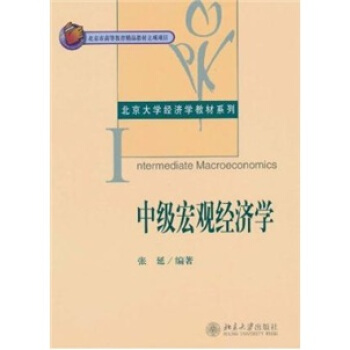
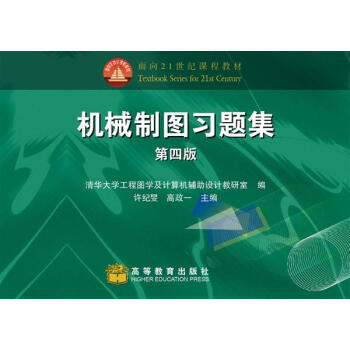






![中国科学院研究生院教材:中英文科技论文写作教程 [How to write scientific papers in Chinese and English] pdf epub mobi 电子书 下载](https://pic.qciss.net/10125591/565be876N40e19232.jpg)
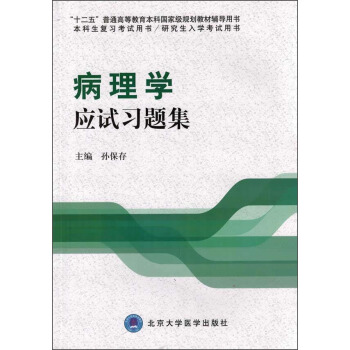
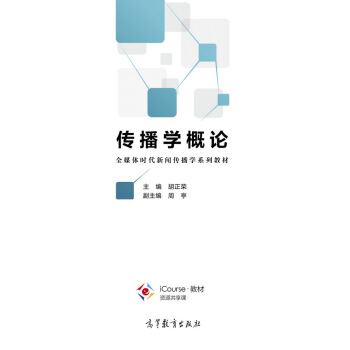

![工商管理优秀教材译丛·金融学系列:财务管理基础(第13版) [Fundamentals of Financial Management,13e] pdf epub mobi 电子书 下载](https://pic.qciss.net/10080031/badc4f74-761b-4067-9bc5-b7a3bd3a9267.jpg)





